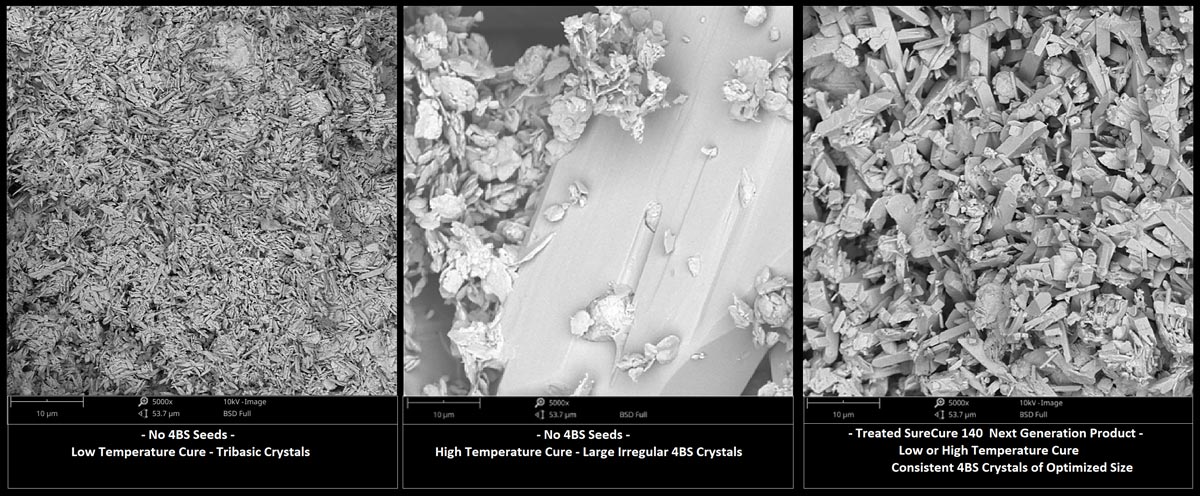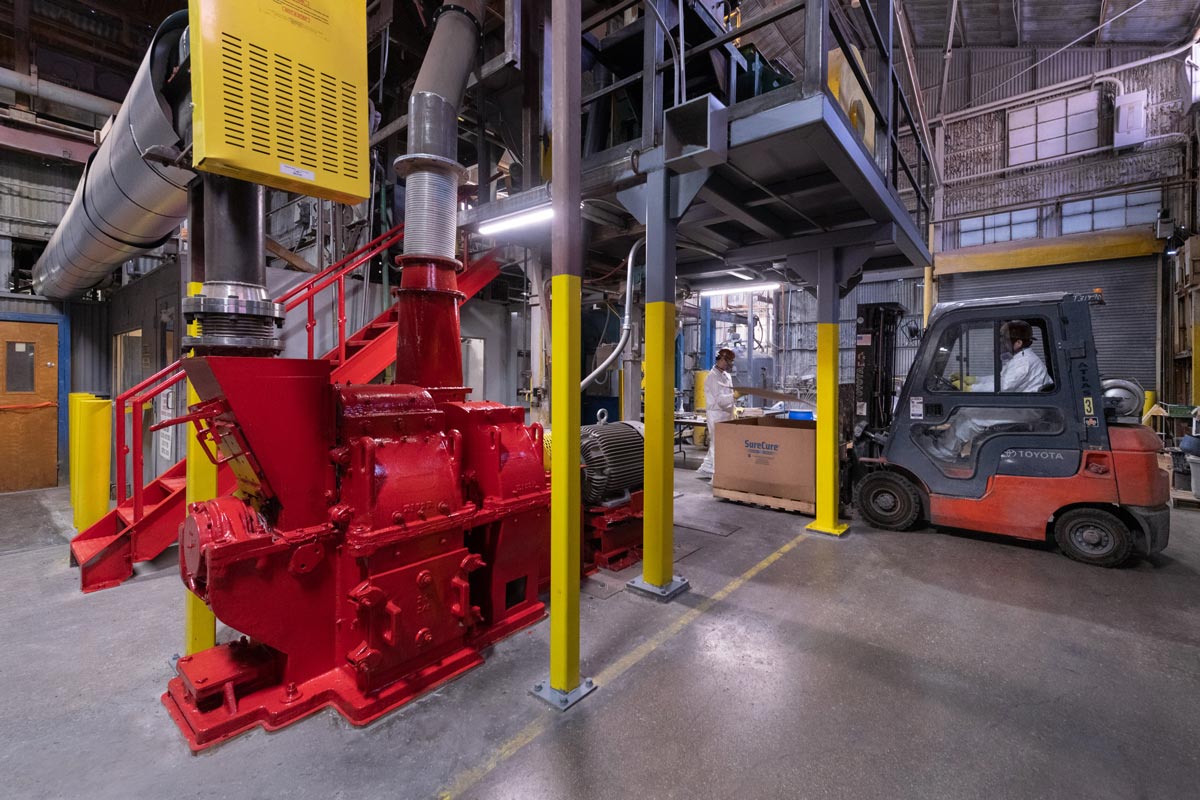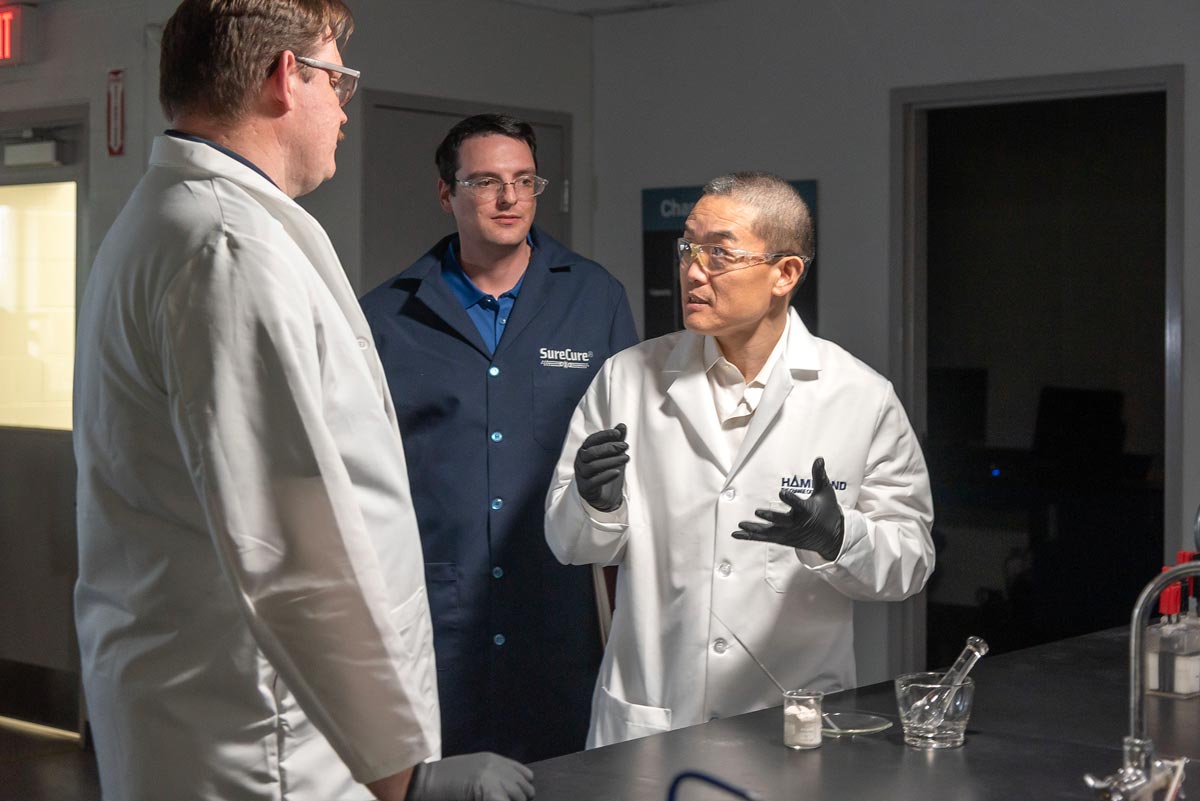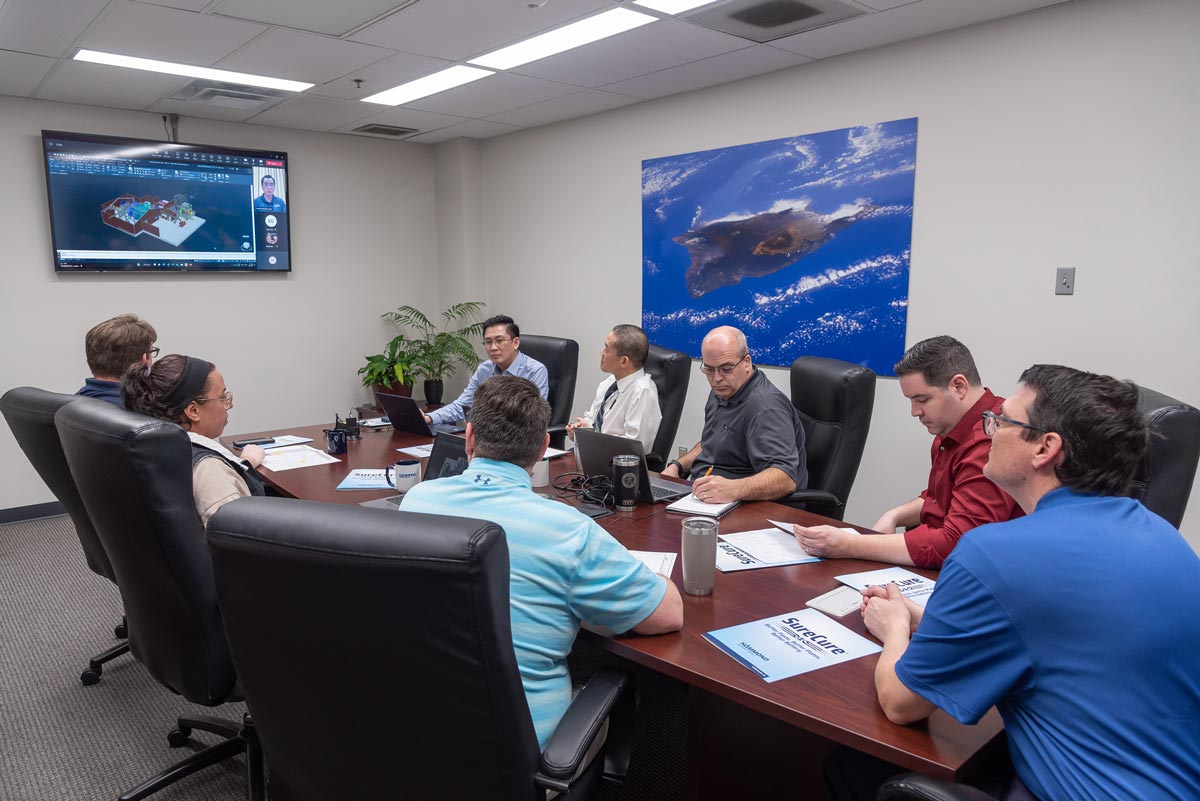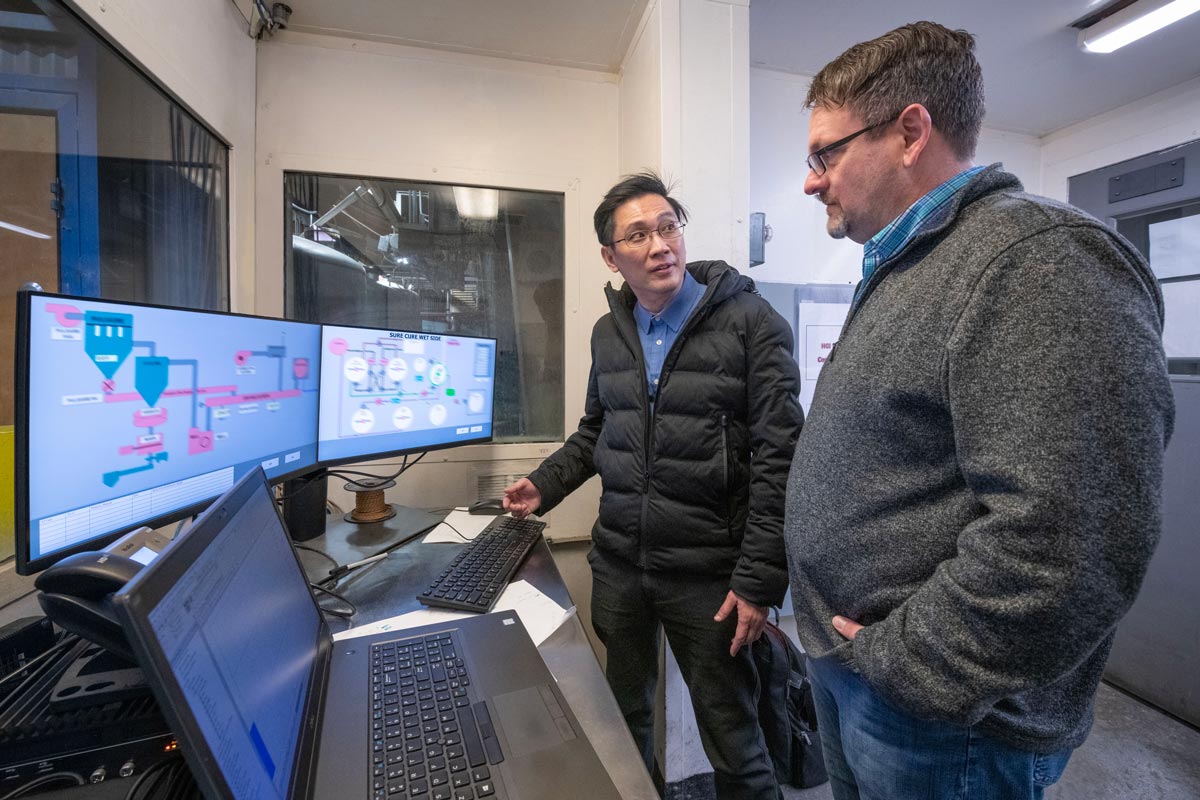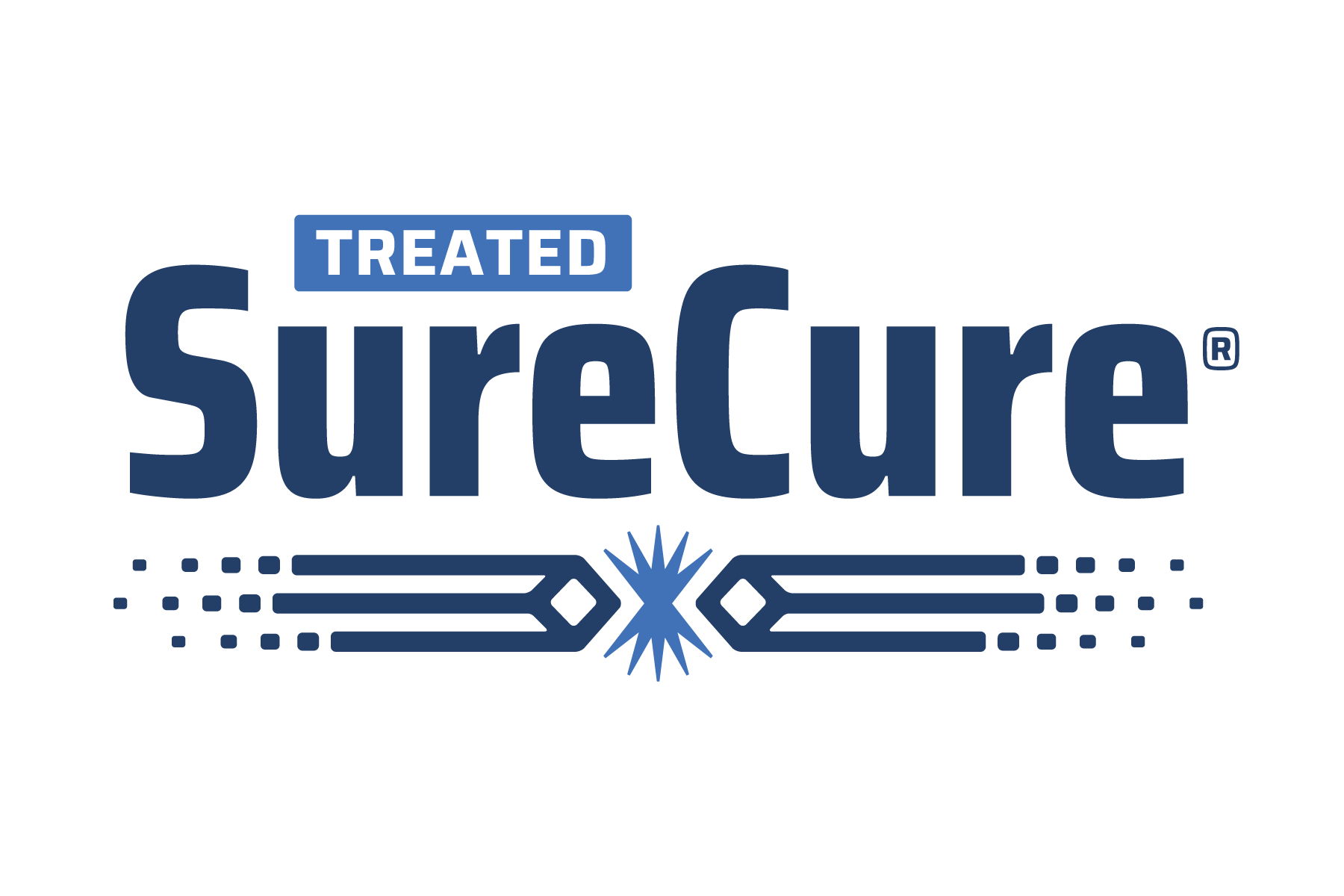Additive Increases Formation Efficiency, Reducing Manufacturing Costs; Increases Battery Life
Hammond Group, Inc. recently announced full-scale operations of its new North American Treated SureCure® manufacturing line, a multi-million dollar investment that doubles production capacity for one of its most effective additives.
“Our new state-of-the-art Treated SureCure® line represents a substantial investment for Hammond,” said Terry Murphy, Hammond’s President and CEO. “It doubles our production capacity and tightens manufacturing controls. Demand for Treated SureCure® has grown quickly since its introduction, as many of our larger North American customers have adopted it. Treated SureCure® allows for 4BS to form at lower temperatures, which means battery manufacturers can save money on energy input, lower their carbon footprint, optimize equipment investment, and produce a more reliable product. The uniform crystals formed in the cured positive material using Treated SureCure® provides benefits to production in terms of shorter formation times and greater formation efficiency over steam cured plates.”
What is Treated SureCure®?
Treated SureCure® is a micro-milled seed crystal that facilitates, controls, and improves the growth of tetrabasic lead sulfate, often called 4BS, which strengthens the positive active material allowing for extended cycle life and cost savings due to the ability to reduce the density of lead in customer paste formulations.
“Treated SureCure® is to the battery what steel reinforcement is to concrete,” explains Tom Wojcinski, Hammond’s Senior Research and Development Chemist. “It provides an extra layer of durability to your material and even allows you to use less since what you have is stronger.
“It had been known in the battery industry that 4BS crystal structures gave increased material durability and cycle life, but often the problem was in controlling the size and consistency of the 4BS structure,” said Wojcinski. “Most manufacturers used very high temperature to induce 4BS growth, which was not easily controlled. The process for synthesizing pure 4BS crystals from the reactions of B-PbO and acid were also known. Thanks to the innovative thinking from Hammond researchers like Dr. David Boden, the idea to use pure synthesized 4BS crystals of a controlled particle size as nucleation sites for the rapid growth of small uniform 4BS in the battery was developed. The process was tested, and beneficial results confirmed with the help of Hammond’s industry partners.”
Treated SureCure® is a major advance over Hammond’s SureCure 100. The Treated SureCure® additive undergoes an additional finishing step which, when used during the curing process, helps to modify the crystal size and structure of the final 4BS in a different way from the original process. This additional modification helps to improve formation efficiency and charge acceptance of batteries.
“Since the improvements in formation efficiency are all linked to controlling the final crystal size of 4BS in the cured material, it is important to note that increasing or decreasing the loading can affect this final crystal size,” said Wojcinski. “More seed sites through higher loading means smaller final crystal sizes, and lower loading equates to fewer seed sites and a larger final crystal size. If the crystals are too big, you lose the benefits in formation efficiency, and if your 4BS is too small, you will not improve your cycling performance.”
With the improvements in crystal size control offered by the finishing treatment for Treated SureCure® and Hammond’s experience in optimizing the loading rates of the additive to achieve the best balance of efficiency versus durability, the recommended loading is at 1% of the weight of the leady oxide used in a customer’s formula to gain the benefits.
According to Wojcinski, “Customers using Treated SureCure® have noted increased charging efficiency, allowing the batteries to perform better with less overcharge. All these improvements translate to better battery performance in cycling, in some cases up to 70% improvement in cycle life over 3BS and older SureCure additives.”
Indiana Location Key for New Production Line
Hammond has been making tetrabasic lead-sulfate, known as SureCure 100, for over 20 years. The company has a production line capable of making just over 4.1 million pounds, or 1900 metric tons, per year at their Malaysian facility in Kuala Lumpur. The demand for the product had risen to such a degree that Hammond installed the new production line to serve North America and Europe from Hammond, Indiana. This new line has a capacity of nearly 5 million pounds per year.
“As plant manager, I was tasked with working across the various departments, outside contractors, and equipment manufacturers to ensure project completion in order to meet the growth in demand for Treated SureCure®,” said Dean Botts, HLP Plant Manager. “The Hammond, Indiana location was specifically chosen for our new Treated SureCure® line as we produce the feedstock material here and we’re centrally located to minimize freight costs to our customers. It’s near our R&D lab, which developed the Treated SureCure® process, and near our corporate Quality team, which will monitor the process under our IATF quality umbrella.”

Hammond’s new manufacturing line consists of a stainless steel reactor for making the feedstock material, stainless steel reactors for making the tetrabasic lead sulfate, several processing tanks, a technically advanced mill, dryer, and an automated packaging line. “The key to consistent results is controlling the process,” Botts said. “During the reaction process, we monitor the crystal structure and halt the reaction to obtain pure tetrabasic lead sulfate. The tetrabasic is then milled to the exact particle size required by our customers.”
Hammond uses similar manufacturing practices and raw materials to produce identical products at both its Indiana and Kuala Lumpur locations. The facilities in Asia, America, and the UK location are ISO:9001 certified for quality. The US location is IATF certified to conform with more strict requirements needed for automotive industry customers. Hammond provides full traceability on all their products including Treated SureCure®.
Treated SureCure® Creates Energy Savings, Reduces Inconsistencies During Curing
Treated SureCure® allows for 4BS to form at lower temperatures, which means battery manufacturers can save money on energy input and equipment investment and gain a more reliable product. The smaller crystals formed in the cured positive material using Treated SureCure® provides benefits to production in terms of shorter formation times and greater formation efficiency over steam cured plates. Additionally, the more durable active material will enhance battery performance by extending cycle life compared to traditional tribasic cured material. The increased durability of the active material means manufacturers may save money by using less material to achieve the same performance.
Ng Ming Yeow, General Manager at Hammond ALSB-Malaysia, has decades of industry experience in the Asian market. He notes, “By improving the cohesion/adhesion of the active material/grid and the durability of the positives, some of our customers have been able to reduce costs by lowering their paste densities to use less lead, up to 5%. That can be a large cost savings with no loss of battery performance using the additive. Not to mention that our new Treated SureCure® also helps form batteries quicker and more efficiently than traditional 4BS curing methods and even our older line of standard SureCure®. Customers who have adopted Treated SureCure® have seen increased post formation voltages and higher initial capacities as well as greater PbO2 content and higher surface area in their formed positive plates using our additive.”
Treated SureCure® is taking the guesswork out of crystal growth. It eliminates the activation energy needed for 4BS formation and allows for a consistent final product in terms of conversion to 4BS.
“Steam curing does produce 4BS crystal structure in the active material,” said Wojcinski. “However, it is a very uncontrolled process and can lead to large, irregular crystal sizes which in turn will increase formation times later in production. Also, steam curing requires a lot of energy to maintain the high temperatures needed to grow the 4BS. So you put in a great deal of resources, in terms of energy and equipment, and end up with an inconsistent product.”
Incorporating Treated SureCure®, battery manufacturers can eliminate much of the guesswork in producing consistent positive plates, saving time, energy, and money. With its new North American production line, Hammond is well equipped to meet the growing demand for Treated SureCure®.
